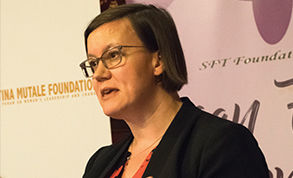Nursing numbers falling short
In a report, The NHS nursing workforce, the NAO said the number of nurses working in the NHS increased by 5% between 2010 and 2019. However, between July and September last year, trusts reported more than 43,500 nursing vacancies (full-time equivalent). The vacancy rate in September 2019 was 12%, a rise of one percentage point since September 2017.
Nurses make up a quarter of NHS staff (320,000 in hospital and community health services) and the NHS long-term plan acknowledged the need to increase numbers further to plug the vacancy gap. The plan set a target of reducing vacancy rates to 5% by 2028. And, though it set out service commitments for a planned £33.9bn cash increase in overall NHS funding, it did not include the detailed workforce plans needed to deliver those commitments.
The report highlights the failure of the 2017 change in nurse funding arrangements. These included the ending of the nursing bursary, replaced by student loans. With the numbers accepted onto nursing degree courses determined by universities, rather than Health Education England (HEE), ministers hoped to increase those studying for nursing, midwifery or other health professional degree courses. There was a 3% fall in the number of new nursing students in 2017/18 – the first year of the new arrangements.
The Department of Health and Social Care committed to a 25% increase in 2018/19 and 2019/20, but this was not met in either year. Bursaries will be reintroduced from this September and early indications are that applications have increased by 6% compared with 2019. However, the NAO said this remained lower than the 2017 figure.
While 17% of the nursing workforce are from overseas, the report said the NHS long-term plan signalled a need to step up recruitment from outside the UK. A HEE recruitment programme had a target of 2,500 new recruits, but only attracted about 1,600 nurses in 2018 and 2019. The target has now increased – 15,000 nurses between 2020 and 2024.
While providers were planning to make greater use of nursing apprenticeships, NHS organisations spent less than 30% of their apprenticeship levy payments in 2018/19. Providers and universities told the NAO there were disincentives to using this route.
The NHS people plan has stalled due to delays to the spending review and the December general election. It is now due to be published in the next few weeks, but the NAO points out that this will be more than 12 months into the five-year funding settlement.
Commons Public Accounts Committee chair Meg Hillier (pictured) said the spread of coronavirus had made the importance of nurses more apparent.
‘There are 44,000 nursing vacancies. Plans to increase the numbers of nurses starting degrees have failed to meet expectations,’ she added. ‘It takes three to four years for policies to train new nurses to have an impact. The government’s people plan must be fully funded and finally start to tackle the real reasons why there are not enough nurses.’
Related content
We are excited to bring you a fun packed Eastern Branch Conference in 2025 over three days.
This event is for those that will benefit from an overview of costing in the NHS or those new to costing and will cover why we cost and the processes.